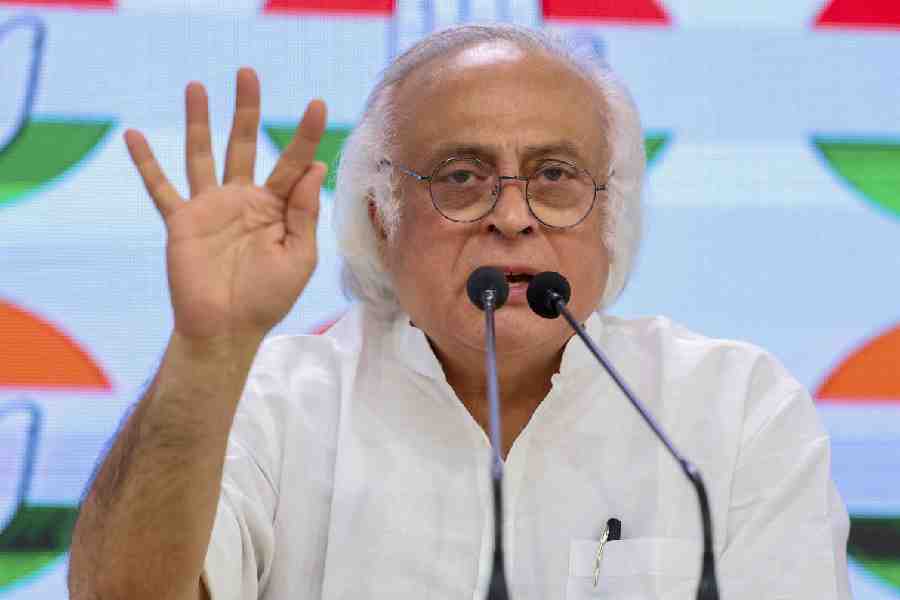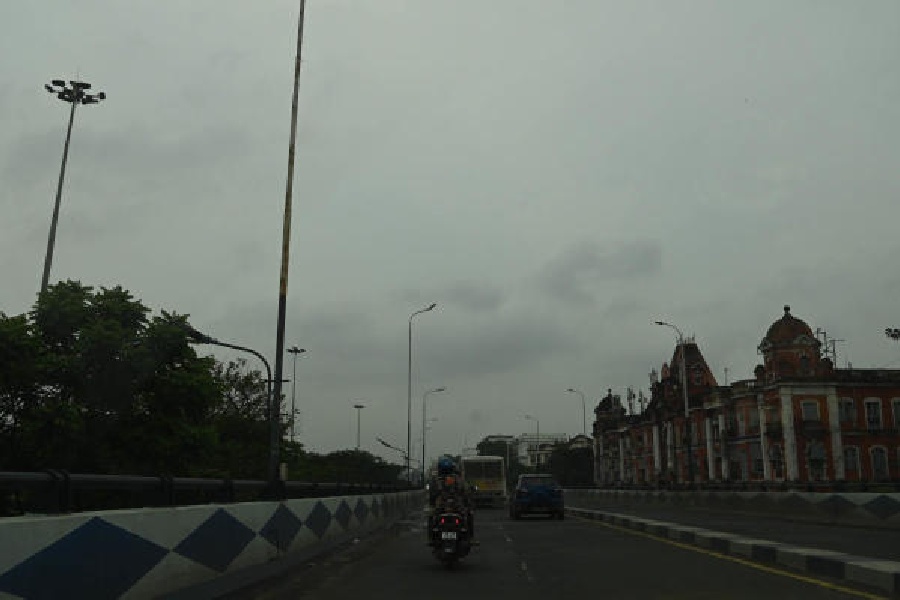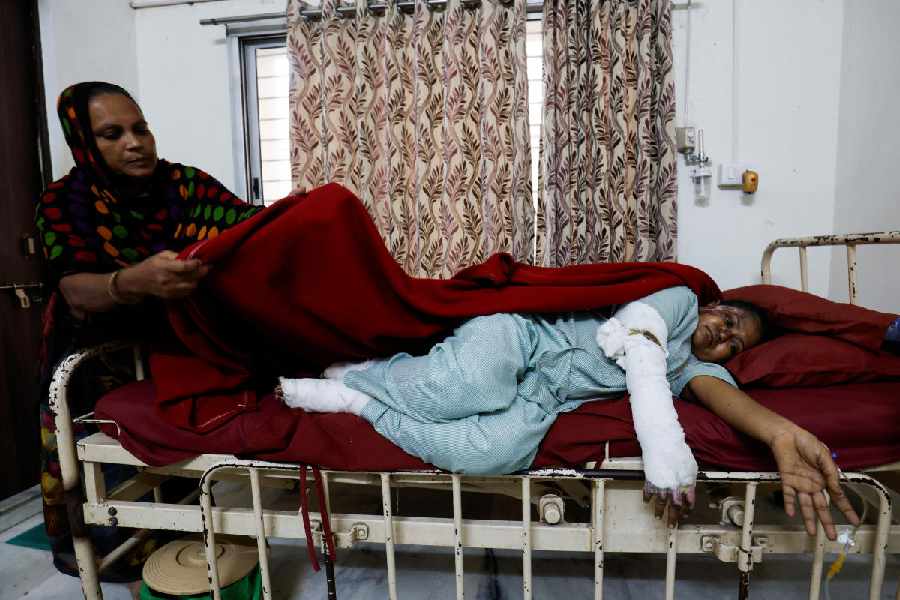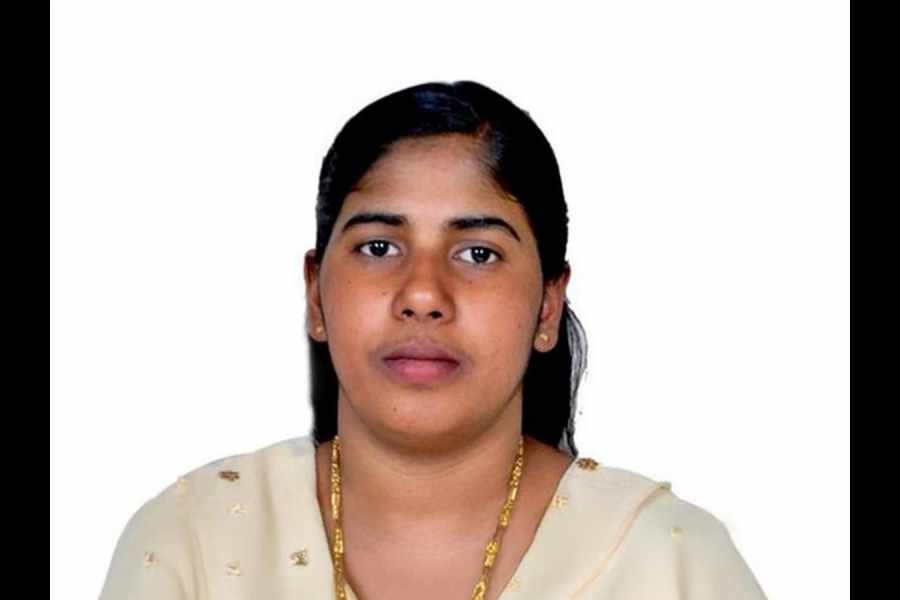 |
| A worker without protective gear oversees disposal of uranium waste in Jadugoda |
It was a pantomime fit to arouse the most bleary-eyed journalist, nursing the inevitable hangover on a freezing January morning. Incoherent with rage and flailing his arms, the veteran Khasi leader, Hopingstone Lyngdoh, was flashing photographs at the treasury benches in the Meghalaya legislative assembly. The pictures showed how “fish had disappeared from rivers, 94 cows had died and dogs turned mad” as a fallout of uranium mining in the West Khasi Hills.
Ten years down the line, Lyngdoh’s pet peeve has metamorphosed into a burning human rights/environment/ heritage issue in the state. Be it World Anti-uranium Day on April 26 or Hiroshima Day on August 8, there is a spate of protests in the capital city of Shillong.
However, there are no rallies at Domiasiat, the hamlet closest to the 748-hectare site earmarked by the Atomic Mining Division for a Rs 450-crore project, codenamed “Doctor”, in 1992. The area in question is 134 kilometres from Shillong, and the terrain so intractable that it takes the better part of a day to reach Wahkaji. Domiasiat, inhabited by half-a-dozen families comprising less than 50 people, is another 12 km away. This little distance entails a two-hour jeep ride (if one is lucky to find a vehicle) or an endless trek through the arid landscape.
It is only to be expected, therefore, that the workforce for a project of this magnitude would have to come in from outside the state. Besides apprehensions over health hazards or environmental degradation, the influx of labourers is one of the major objections raised last week by the anti-mining lobby — comprising the Khasi Students’ Union, the Meghalaya Peoples Human Rights Council and the Heritage and Environment Status Preservation Organization. With elections over on April 20, and a three-week wait for the results, street protests by a restive population over an indigenous matter do not come as a surprise. Reviving an oft-explored theme, the activists have issued a quit notice to the Uranium Corporation of India Limited and demanded an explanation for what had happened to promises of jobs for local people (900 processing workers and 300 miners, for a start).
Few remember the dubious role played by some local villagers in the initial days of the excavation. An AMD scientific officer, who subsequently fled to the Gulf, had lured four youths into smuggling uranium ore (in the form of “yellow cakes”). The AMD had extracted 640 tonnes of uranium ore, processed it in the form of these yellow cakes and sent them for further tests elsewhere. Shortly after the initial prospecting in 1994 at a site 4 km from Domiasiat, an international smuggling racket was busted.
Posing as prospective buyers, police decoys nabbed three Khasi smugglers — Yearless Lyngdoh, J. Chyrmang and S. Lyngdoh — and one Ahmed Raza Khan, who were trying to sell 97.5 kilograms of ore apparently left with them by the AMD official. The police finally “bought” 2.5 kg of the radioactive substance for a hefty sum. Further investigations and an inventory of AMD’s stock of yellow cakes revealed that the amount had not been stolen from the processed samples, raising the spectre of private or parallel excavations in the area.
Given the escalation in militant activities in recent times in the West Khasi Hills district and Meghalaya’s 423-km-long border with Bangladesh — a country reportedly harbouring deadly outfits and enemy intelligence agents — pilferage of ore is a matter of grave concern. This is more so since exploration work has also been reported from the adjoining Mawait area.
The AMD withdrew from Domiasiat in November 1994. Its initial prospecting had revealed that uranium ore was available very close to the surface and that the radioactivity did not exceed 1,000 microrems, the safety limit set by the Atomic Energy Regulatory Board.
The UCIL, which identified adequate uranium resources in the tertiary sedimentary basin of Domiasiat, then expressed interest in the project. However, it could not make much headway since Central clearance and a no-objection certificate from the Meghalaya government are still pending. Given that the project is yet to take off, the claims by environmentalists and NGOs that local people were stricken by unidentifiable ailments and were dying of radiation appear unfounded. Fears have also been voiced about open-pit mining and dumping of uranium waste around the mining area. But the AMD was careful to store unprocessed ore in a concrete tailing (waste) tank and carried away the yellow cakes in special drums to rule out any exposure to radiation during transportation. It is, therefore, imperative to examine whether the sources of radiation could be illegal mining.
The UCIL maintains that it does not wish to rake up a controversy and will not launch operations without the sanction of the local people. In a bid to reassure the villagers, it is awaiting the completion of a baseline study being conducted by six faculty members of the North Eastern Hill University. The survey, headed by the reader of physics, Darlando Khathing, is expected to be completed soon. UCIL’s wariness is understandable given the protests it has run into in other states too. Ever since it came to light that residents of Jadugoda were suffering from genetic deformities, carcinoma and kidney ailments due to radiation, UCIL has gone into an overdrive. It has taken teams of delegates to Jadugoda to gauge the scenario for themselves. It has organized seminars in Shillong and taken a team of KSU, Hespo and MPHRC delegates to Jadugoda recently, along with the state mining and geology minister, Deborah Marak.
The visit, ironically, strengthened the resolve of the NGOs to oppose uranium mining. They are also casting aspersions on the veracity of the Nehu survey and accusing the minister of lying. Even the assurance by the AMD regional director, S.Q. Hoda, that Domiasiat’s low-grade uranium ore would be used to “generate power and not make nuclear bombs,” has failed to cut any ice. On the contrary, a huge gathering attended the screening of the documentary, Buddha Weeps in Jadugoda, in Domiasiat and vowed never to allow a similar catastrophe to strike them.
For the time being, UCIL is keeping a low profile, at least till the brouhaha over the “quit notice” issued to it dies down. Such quit notices are standard procedure in the North-east, aimed at generating effortless compliance through panic reaction. Only last month, a Mizo organization issued quit notices to non-Mizos. More to the point would be the statement made by the chief minister, D.D. Lapang, on Sunday that he had sought the help of the Bhabha Atomic Research Centre to carry out an independent study into the pros and cons of uranium mining, instead of relying on “rumours or emotions.”
Quit-notice deadlines come and go and events are relegated to the recesses of memory. But till such time as a feasible solution is drafted, the 10 million tonnes of uranium reserves at Domiasiat, which is projected as being the potential powerhouse of India’s nuclear research programme, must remain where they are — under the surface.










